- Home
- Isaac Asimov
In the Beginning Page 2
In the Beginning Read online
Page 2
And even the superficial agreement of the words themselves disappears as soon as we ask a further question.
For instance, if we grant the existence of a beginning, suppose we ask just when that beginning took place.
The Bible does not tell us when, directly. Indeed, the Bible does not date a single event in any of the books of the King James Version in any way that would help us tie those events into a specific time in the system of chronology we use.
Nevertheless, the question of when the Creation took place has aroused curiosity, and various Biblical scholars have made every effort to deduce its date by using various statements found in the Bible as indirect evidence.
They did not come to precisely the same answer. The generally accepted conclusion among Jewish scholars, for instance, was that the date of the Creation was October 7,3761 B.C.
James Ussher, the Anglican archbishop of Armagh, Ireland, decided in 1654, on the other hand, that the Creation took place at 9 A.M. on October 23, 4004 B.C. (Ussher’s calculations for this and for the dating of other events in the Bible are usually found in all the page headings of the King James Bible.) Other calculations put the Creation as far back as 5509 B.C.
Thus, the usual estimates for the age of the heaven and earth from Biblical data run from about fifty-seven hundred to seventy-five hundred years. It is over this point that the Biblical conclusions represent an enormous disagreement with the conclusions of science.
The weight of scientific evidence is that Earth, and the solar system generally, came into being in approximately their present form about 4.6 billion years ago. The Universe, generally, came into being, it would seem, about fifteen billion years ago.
The age of Earth, then, according to science, is about six hundred thousand times the age according to the Bible, and the age of the Universe, according to science, is at least two million times the age according to the Bible.
In the light of that discrepancy, the mere agreement between the Bible and science that there was, in fact, a beginning, loses most of its value.
5. God is introduced at once as the motive force behind the Universe. His existence is taken for granted in the Bible, and one might, indeed, argue that the existence of God is self-evident.
Consider: All living things are born through the activities of previous living things. If there were, indeed, a beginning, as the Bible and science both agree, how then did the first living things come into existence?
If there were indeed a beginning, how did all the natural objects-land and sea, hills and valleys, sky and earth-come into being? All artificial objects were fashioned by human beings; who or what then fashioned natural objects?
The usual manner in which this is presented is something like, “A watch implies a watchmaker.” Since it is inconceivable that an object as intricate as a watch came into being spontaneously, it must therefore have been fashioned; how much more must something as intricate as the Universe have been fashioned!
In early times, the analogy was drawn much more tightly. Since human beings can, by blowing, create a tiny wind rushing out of their nostrils and mouths, the wind in nature must, by analogy, be the product of a much more powerful being blowing through nostrils and mouth. If a horse-and-chariot is a common way of progressing over land, then a glowing horse-and-chariot must be the means by which the sun is carried over the sky.
In the myths, every natural phenomenon is likely to have a humanlike creature performing functions analogous to those of the human actions we know, so that nothing in nature takes place spontaneously.
These myriad specialized divinities were often pictured as at odds with each other and as producing a disorderly Universe. As thought grew deeper, the tendency was to suppose one divine being who is responsible for everything, who directs humanity, Earth, and the whole Universe, combining it all into a harmonious whole directed toward some specific end.
It is this sophisticated picture of a monotheistic God that the Bible presents but one who constantly engages himself in the minutiae of his creation. Even under a monotheistic religion, popular thought imagines myriad angels and saints taking on specialized functions so that a form of polytheism (under a supreme monarch) exists.
In the last four centuries, however, scientists have built up an alternate picture of the Universe. The sun doesn’t move across the sky; its apparent motion is due to Earth’s rotation. The wind doesn’t have to be produced by giant lungs; its existence arises through the spontaneous action of air subjected to uneven heating by the sun. In other words, a moving sun does not imply a horse-and-chariot, after all; nor does the wind imply the mouth of a blower.
The natural phenomena of Earth and of the Universe have seemed to fall into place bit by bit as behavior that is random, spontaneous, unwilled, and that takes place within the constraints of the “laws of nature.”
Scientists grew increasingly reluctant to suppose that the workings of the laws of nature were ever interfered with (something that would be defined as a “miracle”). Certainly, no such interference was ever observed, and the tales of such interferences in the past came to seem increasingly dubious.
In short, the scientific view sees the Universe as following its own rules blindly, without either interference or direction.
That still leaves it possible that God created the Universe to begin with and designed the laws of nature that govern its behavior. From this standpoint, the Universe might be viewed as a wind-up toy, which God has wound up once and for all and which is now winding down and winking itself out in all its intricacy without having to be touched at all.
If so, that reduces God’s involvement to a minimum and makes one wonder if he is needed at all.
So far, scientists have not uncovered any evidence that would hint that the workings of the Universe require the action of a divine being. On the other hand, scientists have uncovered no evidence that indicates that a divine being does not exist.
If scientists have not proven either that God exists or that he does not exist, then, from the scientific viewpoint, are we entitled to believe either alternative?
Not really. It is not reasonable to demand proof of a negative and to accept the positive in the absence of such a proof. After all, if science has not succeeded in proving that God does not exist, neither has it succeeded in proving that Zeus does not exist, or Marduk, or Thoth, or any of the myriads of gods postulated by all sorts of myth-makers. If the failure of proof of nonexistence is taken as proof of existence, then we must conclude that all exist.
Yet that leaves us with the final, nagging question: “But where did all this come from? How did the Universe come into being in the first place?”
If one tries to answer, “The Universe was always there; it is eternal,” then one comes up against the uncomfortable concept of eternity and the irresistible assumption that everything had to have a beginning.
Out of sheer exhaustion one longs to solve everything by saying, “God made the Universe!” That gives us a start, at least.
But then we find that we have escaped eternity only by postulating it, for we are not even allowed to ask the question, “Who made God?” The question itself is blasphemous. God is eternal, by definition.
If, then, we are going to be stuck with eternity in any case, there seems some advantage to a science that lives by observing and measuring, to choose an eternal something that can at least be observed and measured—the Universe itself, rather than God.
The notion of an eternal Universe introduces a great many difficulties, some of them apparently (at least in the present state of our scientific knowledge) insuperable, but scientists are not disturbed by difficulties—those make up the game. If all the difficulties were gone and all the questions answered, the game of science would be over. (Scientists suspect that will never happen.)
There, then, is perhaps the most fundamental disagreement between the Bible and science. The Bible describes a Universe created by God, maintained by him, and intimately and constantly dir
ected by him, while science describes a Universe in which it is not necessary to postulate the existence of God at all.
This is not to say, by the way, that scientists are all atheists or that any of them must be atheists of necessity. There are many scientists who are as firmly religious as any nonscientist. Nevertheless, such scientists, if they are competent professionals, must operate on two levels. Whatever their faith in God in ordinary life, they must leave God out of account while engaged in their scientific observations. They can never explain a particular puzzling phenomenon by claiming it to be the result of God’s suspension of natural law.
6. The first act of God recorded in the Bible is that of the creation of the Universe. But since God is eternal, there must have been an infinitely long period of time before he set our Universe into motion. What was he doing during that infinitely long period of time?
When St. Augustine was asked that question, he is supposed to have roared, “Creating Hell for those who ask questions like that!”
Ignoring St. Augustine (if we dare), we might speculate. God might, for instance, have spent the time creating an endless hierarchy of angels. For that matter, he might have created an endless number of universes, one after the other, each for its own purpose, with our own being merely the current member of the series, to be followed by an equally endless number of successors. Or God might, until the moment of the Creation, have done nothing but commune with his infinite self.
All possible answers to the question are merely sup-positions, however, since there is no evidence for any one of them. There is not only no scientific evidence for them; there is not even any Biblical evidence. The answers belong entirely to the world of legend.
But then if we switch to the world of science and think of an eternal Universe, we must ask what the Universe was like before it took on its present form about fifteen billion years ago. There are some speculations. The Universe may have existed through eternity as an infinitely thin scattering of matter and energy that very slowly coalesced into a tiny dense object, the “cosmic egg,” which exploded to form the Universe we now have, a Universe that will expand forever until it is an infinitely thin scattering of matter and energy again.
Or else there is an alternation of expansion and contraction, an endless series of cosmic eggs, each of which explodes to form a Universe. Our own present Universe is only the current member of an endless series.
Science, however, has found no way as yet of penetrating into a time earlier than that of the cosmic egg that exploded to form our Universe. The Bible and science agree in being unable to say anything certainly about what happened before the beginning.
There is this difference. The Bible will never be able to tell us. It has reached its final form, and it simply doesn’t say. Science, on the other hand, is still developing, and the time may come when it can answer questions that, at present, it cannot.
7. By heaven, in this verse, is meant the vault of the sky and the permanent objects within it-the sun, moon, planets, and stars. The Bible views this vault as the Babylonians did (and the Egyptians, the Greeks, and all the early peoples, apparently without exception); that is, as a solid, semicircular dome overspreading Earth. This is the Biblical view throughout. Thus, in Revelation, the last book of the Bible, the final end of the heaven is described thus: “The heaven departed as a scroll when it is rolled together” (Revelation 6:14). This quoted a passage in the Old Testament (Isaiah 34:4) and clearly shows the heaven to have been viewed as no thicker, in proportion to its extent, than a sheet of parchment.
In the scientific view, however, the sky is not a simple vault, but is a vast outstretching of space-time into which our telescopes have probed for distances of ten billion light-years, where each light-year is 5.88 trillion miles long.
8. The “heaven and the earth” form a definite geometrical shape in the Bible. The earth is a flat, probably circular, area of extent large enough to hold those Kingdoms known to the Biblical writers. The heaven is a semispherical vault that nestles down over the earth. Human beings, by this picture, seem to live on the floor of a world that is inside a hollow semisphere.
It is so described in the Book of Isaiah: “It is he [God] that sitteth upon the circle of the earth … that stretched out the heavens as a curtain, and spreadeth them out as a tent to dwell in” (Isaiah 40:22).
The vault of heaven would require support to keep it from collapsing, if we judge from earthly structures. The support might be a supernatural being (like the Greek myth of Atlas) or something more mechanical. The Bible has a passage that reads, “The pillars of heaven tremble” (Job 26:11).
All this is utterly different from the scientific view of Earth as a sphere, suspended in emptiness, that rotates on its axis, revolves about the sun, takes part in the sun’s revolution about the center of the Galaxy, and is surrounded by a largely empty and virtually illimitable Universe.
2 And the earth was without form and void; 9 and darkness 10 was11 upon the face of the deep. And the Spirit of God moved upon the face of the waters.
9. A question arises here. Did God create Earth “without form and void” (the two terms emphasize each other, for Earth is not only “without form,” but it is also “void”—that is. “empty” of form)?
Or was Earth “without form and void” to begin with, and did the process of creation begin from there?
Everything depends on how the first verse in the Bible is interpreted. One might assume that the first verse is a simple declarative statement. “In the beginning God created the heaven and the earth”-and there it all was “without form and void,” created so out of nothing.
Or we might assume that the first verse is a mere introductory summary, almost a chapter heading—The Creation of the Heaven and the Earth. Then there follows the actual description of how it was done.
Modern scholars seem to think the second interpretation is the more likely. The Anchor Bible, published in 1964, begins Genesis thus: “When God set about to create heaven and earth—the world being then a formless waste…”
This would make it seem that the raw material of the world was there all along and that God’s role in the Creation was that of shaping the raw material of the Universe into the finished form, much as a potter shapes the raw clay into a vessel. In fact, the metaphor is used in the Bible: “But now, O Lord, thou art our father; we are the clay, and thou our potter; and we all are the work of thy hand” (Isaiah 64:8).
This was the Greek view, too, for in their mythology, there was “Chaos” (meaning “disorder”) in the beginning of things. All the material out of which the world was formed was randomly mixed, and creation consisted in imposing order (“Cosmos”) upon it.
This is not too far different from some aspects of the scientific view of Creation. If we confined ourselves to the solar system, the present view of scientists is that it was formed from a vast cloud of dust and gas. It is easy to see that the original cloud of dust and gas represents matter in complete disorder and is an approach to chaos.
As the cloud slowly swirled, its own gravitational field drew it together, causing it to whirl faster and faster in accordance with the law of conservation of angular momentum. Most of the matter finds its way into the central core, becoming the sun, but turbulence produces secondary, much smaller concentrations that make up the planets, including Earth. Tertiary, still smaller concentrations form the satellites.
Certainly, we see here Cosmos arising out of Chaos, order out of disorder.
The solar system is not, however, all there is to the Universe, Our sun, with its attendant planets, is only one such object out of a few hundred billion which, taken together, form a flattened, whirling disk of stars, called the Galaxy.
Scientists think that the entire Galaxy (and each of a hundred billion or so other galaxies) was formed out of a whirling cloud of dust and gas a hundred billion times as massive as the one out of which our single solar system was formed. There again it would seem that order is formed out of disor
der, as a mass of swirling gas and dust “without form and void” breaks up into billions upon billions of individual stars (many or most of them with planetary systems, presumably, though for this we do not yet have direct evidence).
In one respect there is a great difference between the Biblical view at this point and the scientific view. The Biblical view would make it appear that Earth and the rest of the Universe were all created at the same time.
In the scientific view, Earth and the entire solar system are latecomers in the Universe. When the solar system formed out of its dust cloud, the Galaxy had already existed in much its present shape for some ten billion years.
The sun is, in fact, a “second-generation star” formed out of a cloud of dust and gas that contained within it the remains of earlier stars that had lived out their lifetimes and exploded, strewing their material into space.
If we leave that discrepancy out of consideration, there remain two points to be made out of this “Chaos-into-Cosmos” progression, which the Biblical tale of creation and the scientific view have in common.
First, it implies the eternal existence of the raw material out of which the Universe is fashioned, so that the problem of “But where did it all come from?” is no more answered by the Bible than by science.
Second, there is an important scientific generalization, the second law of thermodynamics, which holds that, on the whole, there is a general, overall progression from order to disorder. The formation of the solar system and of the galaxies would seem to move in a direction counter to that which the second law of thermodynamics would enforce.
Does this imply that the laws of science are inadequate to explain the creation of the solar system and the galaxies and that we must postulate the existence of God-who alone is capable of overriding the second law of thermodynamics when necessary? This is something I will return to.
10. The verse goes on to emphasize the chaos in the beginning, for darkness is a symbol of chaos.
That is natural. An orderly nature with everything in its place is clearly evident in the light. Let the darkness fall, particularly in a strange place, and we no longer have the benefit of order. We do not know where anything is, and we must stumble and grope as though chaos had come again.

 The Return of the Black Widowers
The Return of the Black Widowers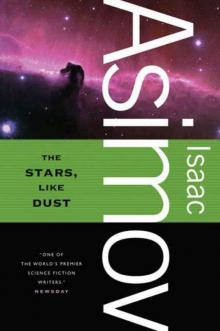 The Stars, Like Dust
The Stars, Like Dust Foundation
Foundation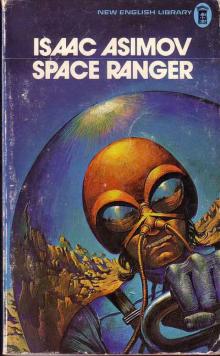 David Starr Space Ranger
David Starr Space Ranger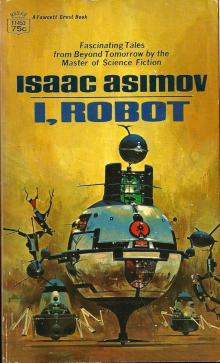 I, Robot
I, Robot Puzzles of the Black Widowers
Puzzles of the Black Widowers Casebook of the Black Widowers
Casebook of the Black Widowers The Ugly Little Boy
The Ugly Little Boy Azazel
Azazel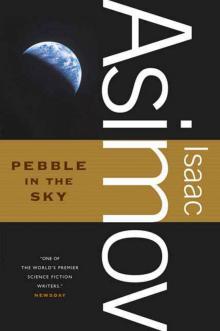 Pebble in the Sky
Pebble in the Sky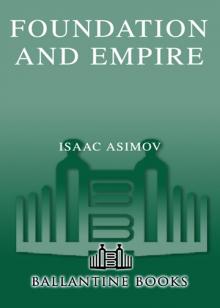 Foundation and Empire
Foundation and Empire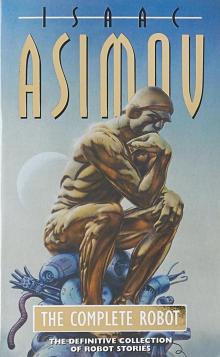 The Complete Robot
The Complete Robot Fantastic Voyage
Fantastic Voyage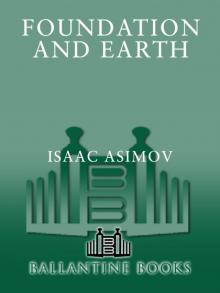 Foundation and Earth
Foundation and Earth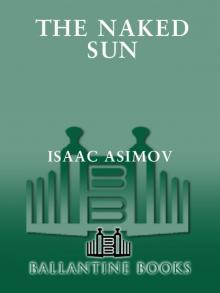 The Naked Sun
The Naked Sun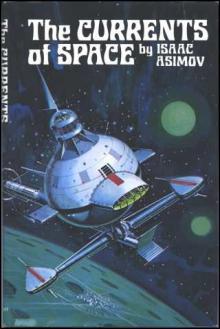 The Currents of Space
The Currents of Space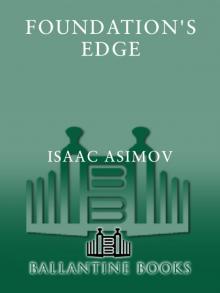 Foundation's Edge
Foundation's Edge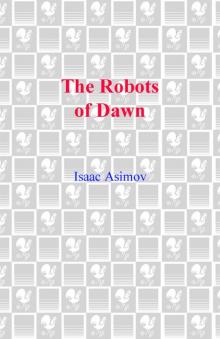 The Robots of Dawn
The Robots of Dawn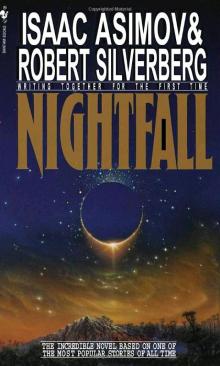 Nightfall
Nightfall The Caves of Steel
The Caves of Steel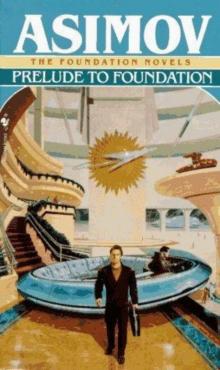 Prelude to Foundation
Prelude to Foundation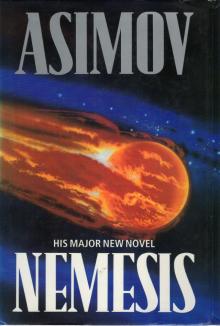 Nemesis
Nemesis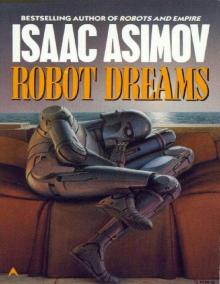 Robot Dreams
Robot Dreams More Tales of the Black Widowers
More Tales of the Black Widowers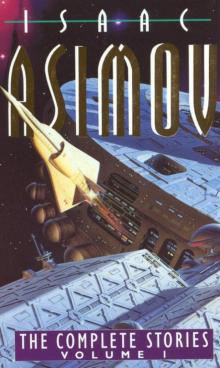 The Complete Stories
The Complete Stories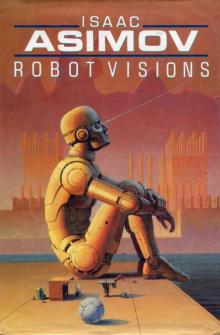 Robot Visions
Robot Visions Lucky Starr And The Moons of Jupiter
Lucky Starr And The Moons of Jupiter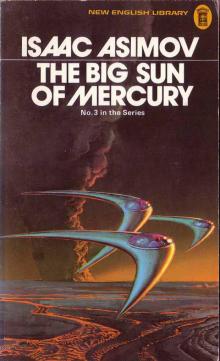 Lucky Starr and the Big Sun of Mercury
Lucky Starr and the Big Sun of Mercury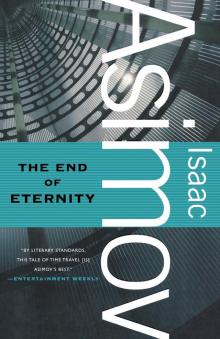 The End of Eternity
The End of Eternity The Bicentennial Man and Other Stories
The Bicentennial Man and Other Stories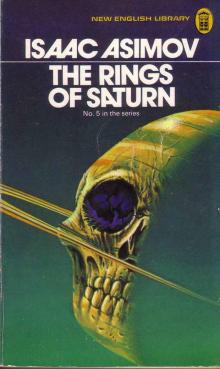 Lucky Starr And The Rings Of Saturn
Lucky Starr And The Rings Of Saturn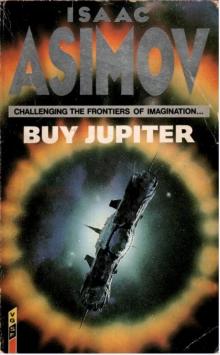 Buy Jupiter and Other Stories
Buy Jupiter and Other Stories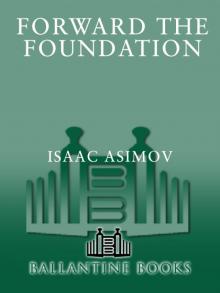 Forward the Foundation
Forward the Foundation Lucky Starr and the Oceans of Venus
Lucky Starr and the Oceans of Venus The Positronic Man
The Positronic Man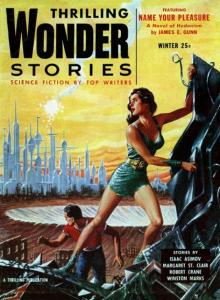 The Portable Star
The Portable Star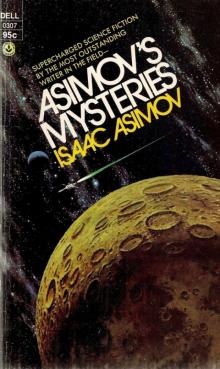 Asimovs Mysteries
Asimovs Mysteries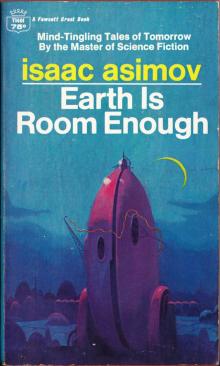 Earth Is Room Enough
Earth Is Room Enough The Gods Themselves
The Gods Themselves Youth
Youth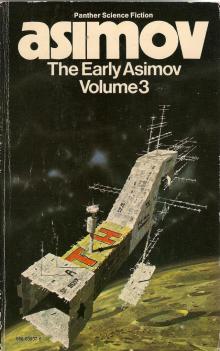 The Early Asimov Volume 3
The Early Asimov Volume 3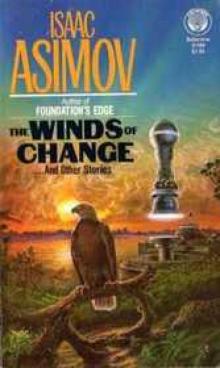 The Winds of Change and Other Stories
The Winds of Change and Other Stories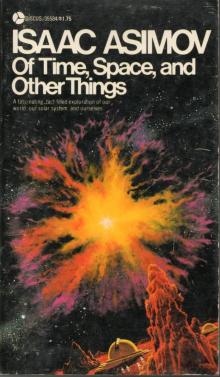 Of Time, Space, and Other Things
Of Time, Space, and Other Things Nine Tomorrows
Nine Tomorrows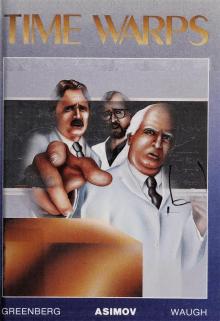 Time Warps
Time Warps Robots and Empire
Robots and Empire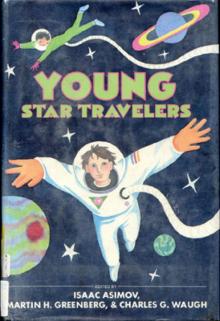 Young Star Travelers
Young Star Travelers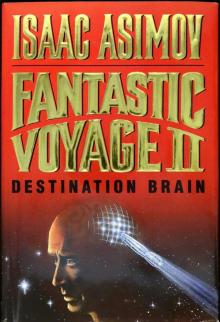 Fantastic Voyage II: Destination Brain
Fantastic Voyage II: Destination Brain Second Foundation
Second Foundation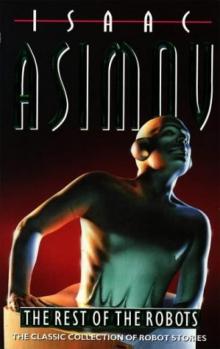 The Rest of the Robots
The Rest of the Robots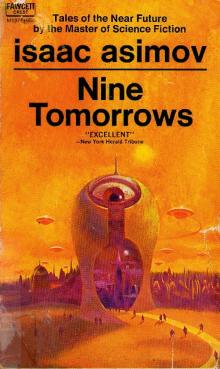 NINE TOMORROWS Tales of the Near Future
NINE TOMORROWS Tales of the Near Future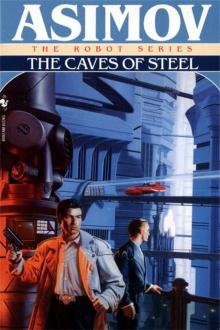 Daneel Olivaw 1 - The Caves of Steel
Daneel Olivaw 1 - The Caves of Steel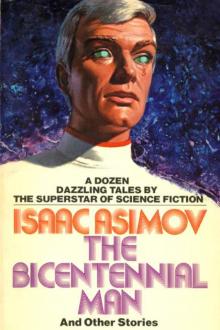 THE BICENTENNIAL MAN
THE BICENTENNIAL MAN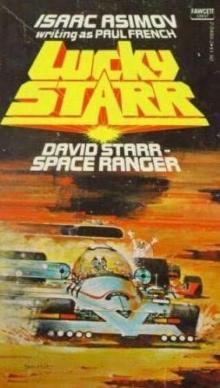 David Starr Space Ranger (lucky starr)
David Starr Space Ranger (lucky starr)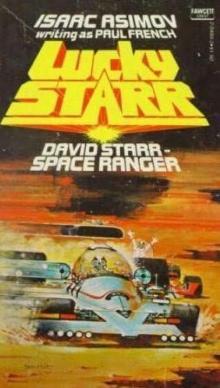 David Starr Space Ranger (ls)
David Starr Space Ranger (ls)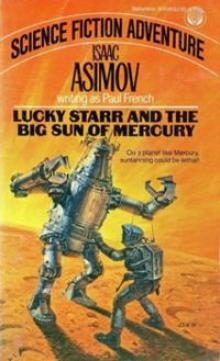 Lucky Starr And The Big Sun Of Mercury ls-4
Lucky Starr And The Big Sun Of Mercury ls-4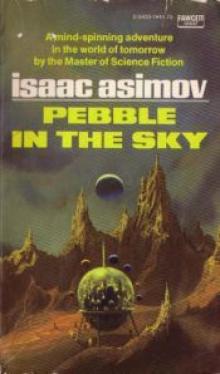 Pebble In The Sky te-1
Pebble In The Sky te-1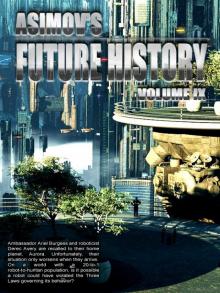 Asimov’s Future History Volume 9
Asimov’s Future History Volume 9 Gold: The Final Science Fiction Collection
Gold: The Final Science Fiction Collection Foundation and Earth f-7
Foundation and Earth f-7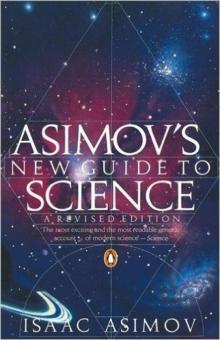 Asimov's New Guide to Science
Asimov's New Guide to Science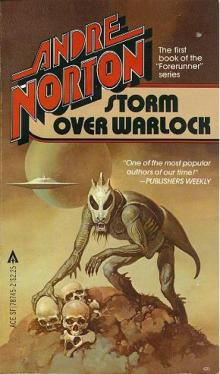 STORM OVER WARLOCK
STORM OVER WARLOCK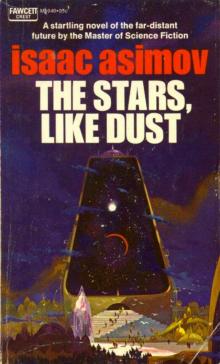 Stars, Like Dust
Stars, Like Dust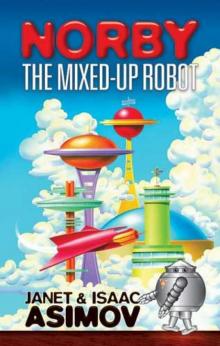 Norby The Mixed-Up Robot
Norby The Mixed-Up Robot Found!
Found!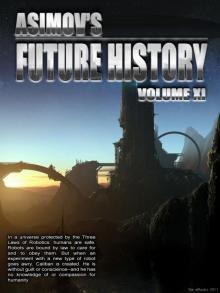 Asimov’s Future History Volume 11
Asimov’s Future History Volume 11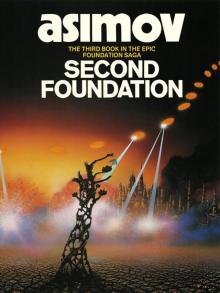 Second Foundation f-5
Second Foundation f-5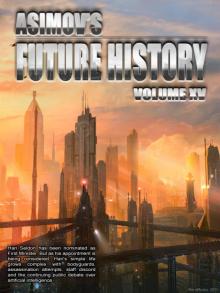 Asimov’s Future History Volume 15
Asimov’s Future History Volume 15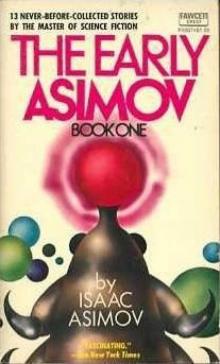 The Early Asimov. Volume 1
The Early Asimov. Volume 1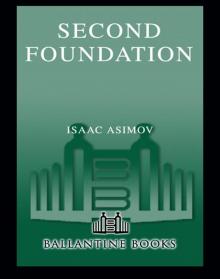 Secound Foundation
Secound Foundation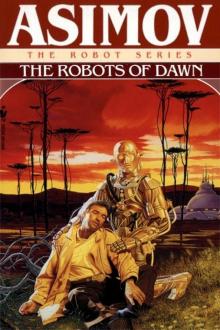 Daneel Olivaw 3 - The Robots of Dawn
Daneel Olivaw 3 - The Robots of Dawn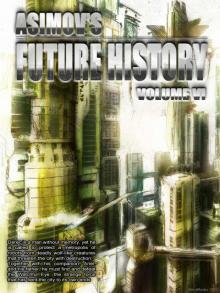 Asimov’s Future History Volume 6
Asimov’s Future History Volume 6 The Early Asimov. Volume 2
The Early Asimov. Volume 2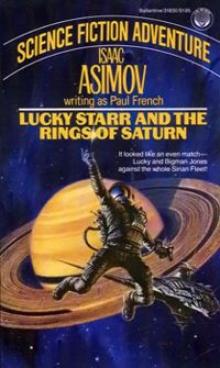 Lucky Starr And The Rings Of Saturn ls-6
Lucky Starr And The Rings Of Saturn ls-6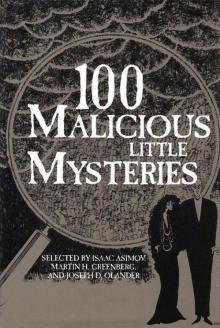 100 Malicious Little Mysteries
100 Malicious Little Mysteries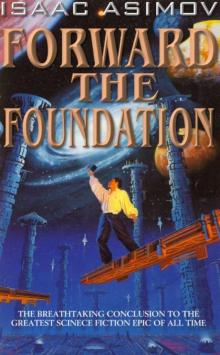 Forward the Foundation f-2
Forward the Foundation f-2 I.Asimov: A Memoir
I.Asimov: A Memoir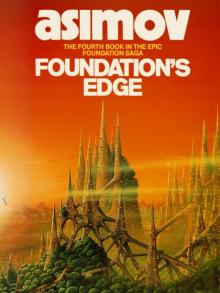 Foundation's Edge f-6
Foundation's Edge f-6 Lucky Starr and the Pirates of the Asteroids ls-2
Lucky Starr and the Pirates of the Asteroids ls-2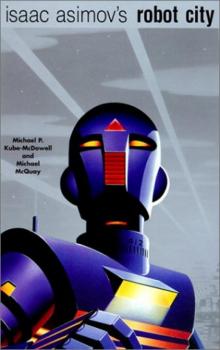 Robot City 1 & 2
Robot City 1 & 2 The Fourth Science Fiction Megapack
The Fourth Science Fiction Megapack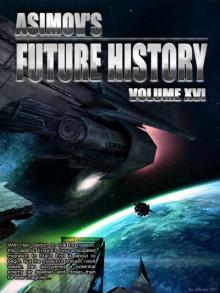 Asimov’s Future History Volume 16
Asimov’s Future History Volume 16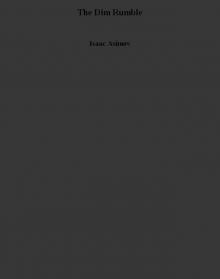 The Dim Rumble
The Dim Rumble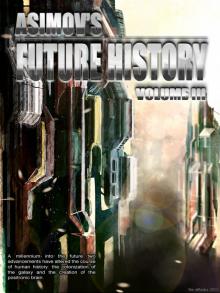 Asimov's Future History Volume 3
Asimov's Future History Volume 3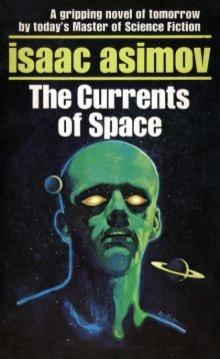 The Currents Of Space te-3
The Currents Of Space te-3 Asimov’s Guide To Shakespear. Volume 1
Asimov’s Guide To Shakespear. Volume 1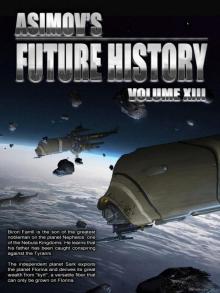 Asimov’s Future History Volume 13
Asimov’s Future History Volume 13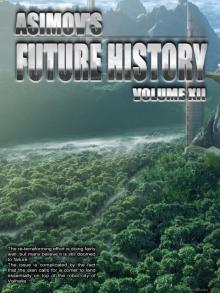 Asimov’s Future History Volume 12
Asimov’s Future History Volume 12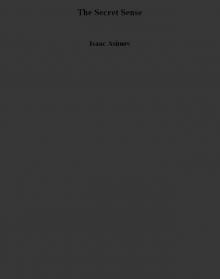 The Secret Sense
The Secret Sense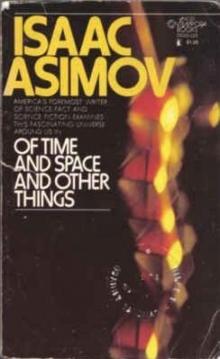 Of Time and Space and Other Things
Of Time and Space and Other Things Norby tnc-2
Norby tnc-2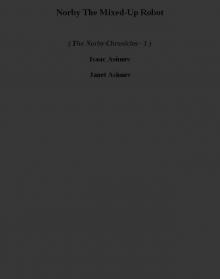 Norby The Mixed-Up Robot tnc-1
Norby The Mixed-Up Robot tnc-1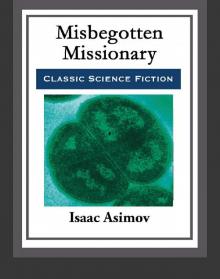 Misbegotten Missionary
Misbegotten Missionary Asimov’s Future History Volume 19
Asimov’s Future History Volume 19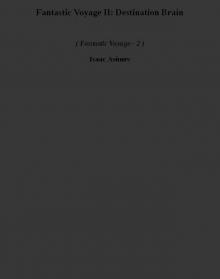 Fantastic Voyage II: Destination Brain fv-2
Fantastic Voyage II: Destination Brain fv-2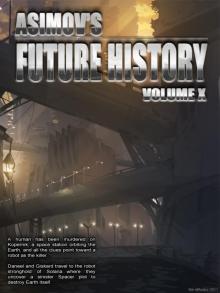 Asimov’s Future History Volume 10
Asimov’s Future History Volume 10 Asimov's Future History Volume 2
Asimov's Future History Volume 2 Feeling of Power
Feeling of Power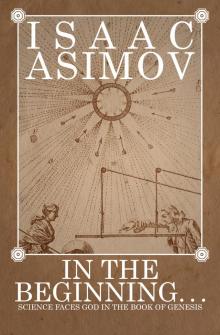 In the Beginning
In the Beginning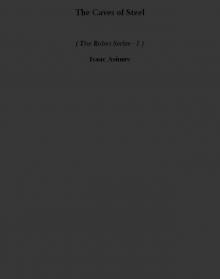 The Caves of Steel trs-1
The Caves of Steel trs-1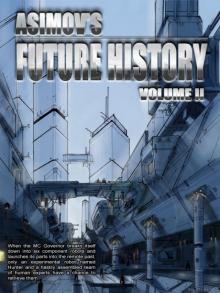 Asimov's Future History Vol 2
Asimov's Future History Vol 2 Caliban c-1
Caliban c-1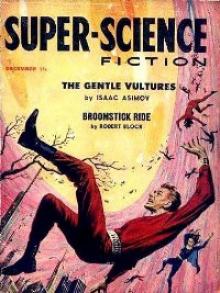 The Gentle Vultures
The Gentle Vultures Utopia c-3
Utopia c-3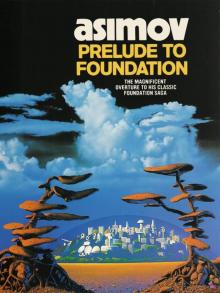 Prelude to Foundation f-1
Prelude to Foundation f-1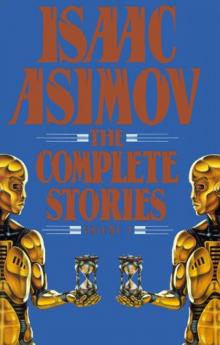 Short Stories Vol.1
Short Stories Vol.1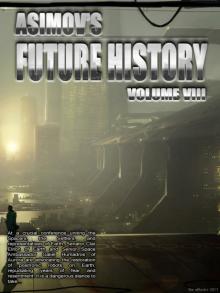 Asimov’s Future History Volume 8
Asimov’s Future History Volume 8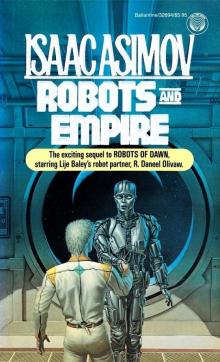 Daneel Olivaw 4 - Robots and Empire
Daneel Olivaw 4 - Robots and Empire Lucky Starr The And The Moons of Jupiter ls-5
Lucky Starr The And The Moons of Jupiter ls-5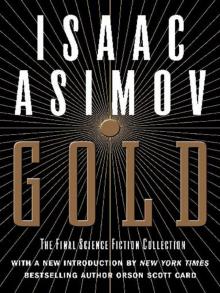 Gold
Gold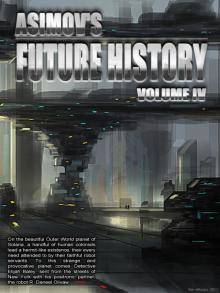 Asimov’s Future History Volume 4
Asimov’s Future History Volume 4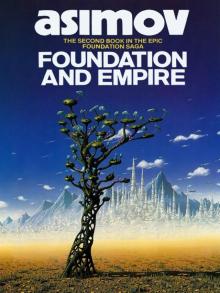 Foundation and Empire f-4
Foundation and Empire f-4 Potential
Potential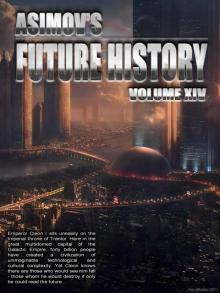 Asimov’s Future History Volume 14
Asimov’s Future History Volume 14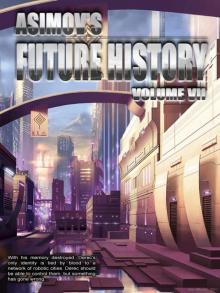 Asimov’s Future History Volume 7
Asimov’s Future History Volume 7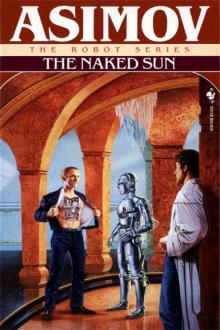 Daneel Olivaw 2 - The Naked Sun
Daneel Olivaw 2 - The Naked Sun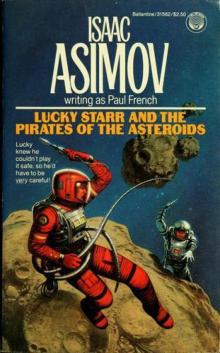 Lucky Starr and the Pirates of the Asteroids
Lucky Starr and the Pirates of the Asteroids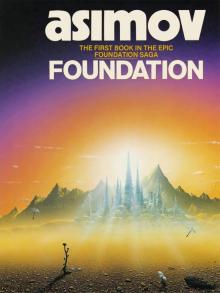 Foundation f-3
Foundation f-3 All the Troubles of the World
All the Troubles of the World Cleon the Emperor
Cleon the Emperor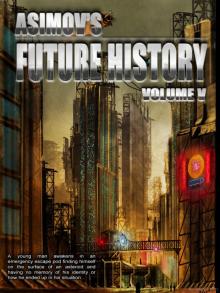 Asimov's Future History Volume 5
Asimov's Future History Volume 5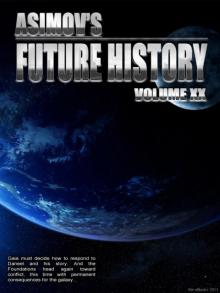 Asimov’s Future History Volume 20
Asimov’s Future History Volume 20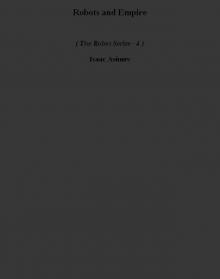 Robots and Empire trs-4
Robots and Empire trs-4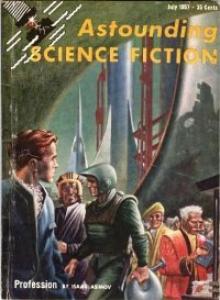 Profession
Profession It's Been a Good Life
It's Been a Good Life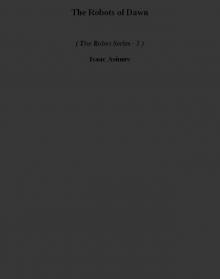 The Robots of Dawn trs-3
The Robots of Dawn trs-3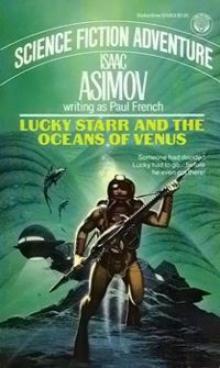 Lucky Starr And The Oceanf Of Venus ls-3
Lucky Starr And The Oceanf Of Venus ls-3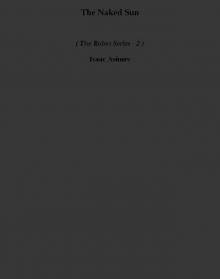 The Naked Sun trs-2
The Naked Sun trs-2 Asimov's Future History Volume 1
Asimov's Future History Volume 1